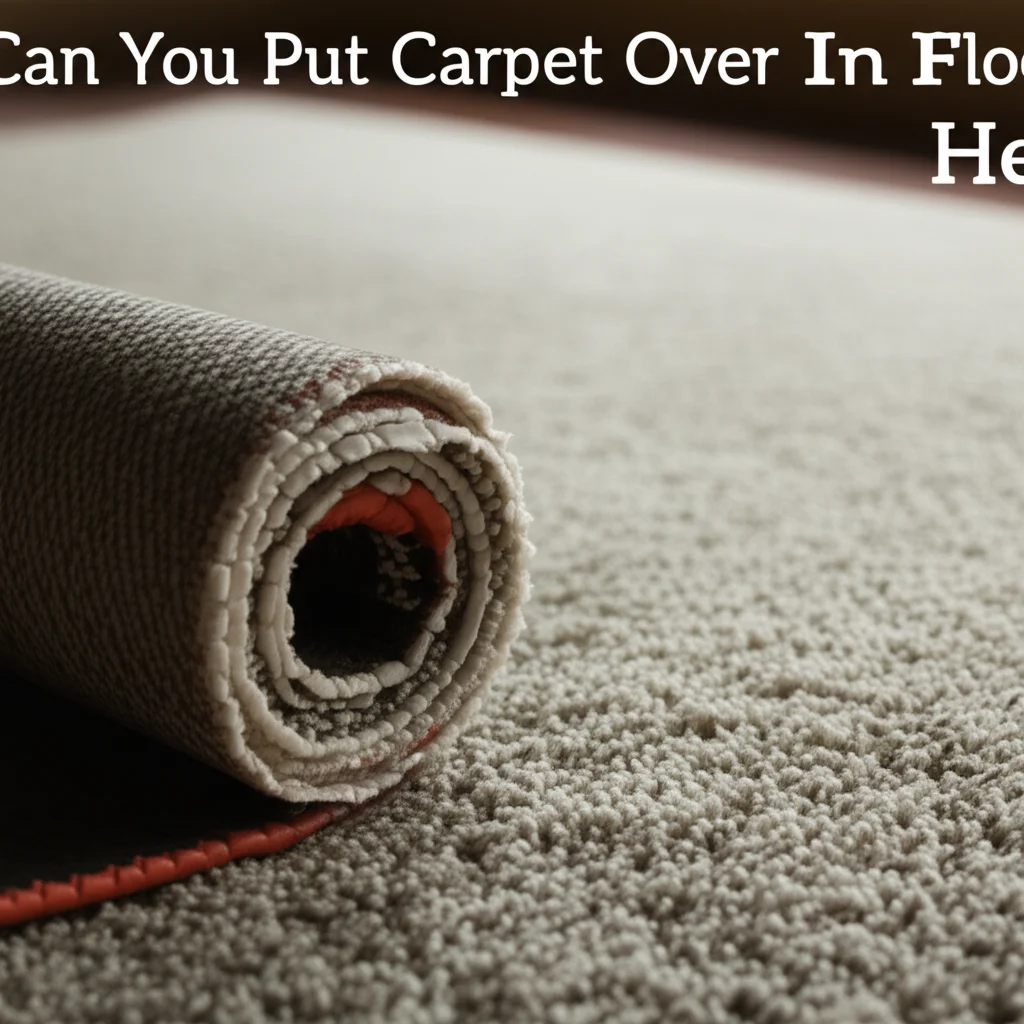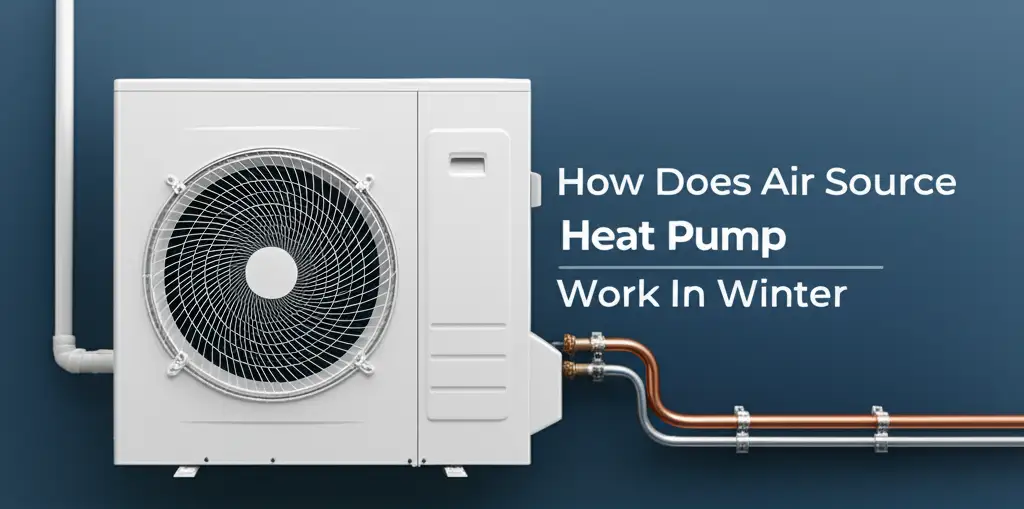· Todd Martin · Home Heating · 21 min read
Can You Put Carpet Over In Floor Heat

Can You Put Carpet Over In-Floor Heat? Your Essential Guide
Imagine a cold winter morning, and instead of stepping onto a chilly floor, you feel a gentle, pervasive warmth radiating through your home. That is the magic of in-floor heating. Many homeowners desire this comfort but also love the softness and acoustic benefits of carpet. A common question arises: “Can you put carpet over in-floor heat?” This inquiry often sparks debate. The simple answer is yes, you can. However, certain considerations are vital for success.
Installing carpet over radiant floor heating requires careful planning. You need to understand how materials impact heat transfer. The wrong choices can significantly reduce efficiency and comfort. This article explores the compatibility between carpet and in-floor heating. We will discuss crucial factors like carpet type, padding choices, and R-value. We also cover installation best practices and provide maintenance tips. By the end, you will have a clear understanding of how to enjoy both luxurious warmth and cozy carpet in your home.
Takeaway
- Choose Low R-Value Materials: Select carpet and padding with a combined R-value of 1.0 or less to allow efficient heat transfer.
- Opt for Low-Pile Carpet: Synthetic, low-pile carpets are generally better for heat conduction than thick, natural fiber options.
- Select Thin, Dense Pad: Use a specialized carpet pad designed for radiant heat, typically thin and dense, avoiding foam or rubber.
- Follow Proper Installation: Acclimate materials, consider glue-down methods, and avoid piercing heating elements with fasteners.
- Maintain for Longevity: Regularly clean the carpet, being mindful of moisture, to ensure continued performance and comfort with your heated floor.
Yes, you can put carpet over in-floor heat. Successful installation requires selecting specific carpet types and low R-value padding. These choices ensure efficient heat transfer from the radiant system to your room. Proper installation techniques are also crucial to maintain heating system effectiveness and ensure long-term comfort.
Understanding In-Floor Heating Systems
Before placing carpet over in-floor heat, it helps to understand how these systems work. Radiant floor heating systems deliver warmth directly to objects and people in a room. This differs from forced-air systems, which heat the air. Radiant heat creates a very comfortable warmth, often described as “toasty toes.”
There are two main types of in-floor heating systems. The first is hydronic, using hot water circulating through tubes beneath the floor. A boiler heats the water. This system is energy-efficient for large areas. The second type is electric, using heating cables or mats. Electric systems are often simpler to install. They are popular for smaller areas like bathrooms. Both systems rely on direct contact with the floor surface to transfer heat upwards. This upward heat transfer is key to their efficiency. When you add a layer like carpet, you introduce a barrier to this process. The carpet and its padding must allow heat to pass through effectively. Otherwise, your heating system will work harder and use more energy.
Understanding your specific in-floor heating system is important. Hydronic systems might respond slower to temperature changes. Electric systems heat up faster. Knowing your system helps you make informed choices about carpet. The goal is to maximize heat output and minimize energy waste. Your floor heating provides a luxurious comfort. You want to preserve that feeling even with carpet.
The effectiveness of any in-floor heating system depends on minimal heat loss downwards. It also depends on optimal heat transfer upwards. This is where flooring choice becomes critical. Materials with high insulation properties can trap the heat. They prevent it from reaching the room. So, carefully considering what you put on top of your heated floor is not just about aesthetics. It is also about functionality and energy bills.
The R-Value Conundrum: Heat Transfer and Insulation
The R-value is critical when considering carpet over in-floor heat. R-value measures a material’s resistance to heat flow. A higher R-value means better insulation. For walls or attics, a high R-value is desirable. It prevents heat from escaping. However, for radiant floor heating, a high R-value in your flooring is problematic.
Materials with a high R-value will trap the heat beneath the carpet. This reduces the heat reaching your living space. Your in-floor heating system will then need to run longer or at higher temperatures. This uses more energy and increases your heating costs. The goal is to choose flooring materials that allow heat to pass through easily. This ensures your radiant system operates efficiently. You want warmth, not a heat-trapping barrier.
What is R-Value?
R-value stands for “thermal resistance value.” It quantifies how well a two-dimensional barrier resists the conductive flow of heat. Think of it as a material’s ability to insulate. The higher the number, the more insulative the material. For example, thick insulation in an attic has a high R-value. This helps keep heat inside the house during winter.
When we talk about floor coverings, carpet inherently has some R-value. Its fibers trap air, which acts as an insulator. The thicker the carpet, the more air it traps, and the higher its R-value. Carpet padding also contributes significantly to the overall R-value of your flooring system. Different pad materials have varying insulation properties. This is why selecting both the carpet and the pad carefully is vital for radiant heat efficiency.
Ideal R-Value for Radiant Heat
For radiant floor heating, the generally accepted maximum combined R-value for the carpet and its padding is 1.0. Some manufacturers even recommend staying below R-value 0.8. Exceeding this limit can drastically reduce your system’s efficiency. It may also lead to uneven heating. This can cause discomfort or even damage to the heating elements over time due to overheating if the heat cannot escape adequately.
When selecting carpet and pad, you must consider their individual R-values. Add them together to get the total R-value. Most carpet manufacturers provide this information. If they do not, you can ask a reputable flooring dealer. They often have resources or experience with radiant heat applications. Remember, the goal is to choose the least insulative option that still provides comfort. This ensures your in-floor heating system works as intended. Selecting the right materials means you can enjoy both the warmth of radiant heat and the softness of carpet without compromising performance. For more about different carpet types, you can read what is floor covering carpet.
Choosing the Right Carpet for In-Floor Heat
Selecting the proper carpet for your heated floors is a key decision. Not all carpets are suitable for radiant heating systems. The ideal carpet allows heat to pass through effectively. It also needs to withstand the temperature fluctuations without damage. This is why material composition and pile height are crucial factors.
Dense, low-pile carpets are generally the best choice. These carpets have shorter fibers packed closely together. They trap less air than high-pile options. Less trapped air means a lower R-value. This allows more heat from your radiant system to reach the room. You get efficient heating and a comfortable surface. Consider the carpet’s backing as well. Some backings are better at conducting heat. Always check with the manufacturer for specific recommendations regarding radiant heat.
Low-Pile vs. High-Pile Carpets
When choosing carpet for in-floor heat, the pile height makes a big difference. Low-pile carpets, like loop pile or low-cut pile, are excellent choices. Their fibers are short and tightly woven. This structure minimizes the air pockets within the carpet. Air pockets act as insulation. So, fewer air pockets mean less insulation and a lower R-value. This allows heat to transfer easily from the floor to the room.
High-pile carpets, such as shags or thick friezes, are not recommended. They have long, loose fibers that create significant air pockets. These air pockets provide excellent insulation. While this might be cozy in a non-heated room, it will block radiant heat. Your floor heating system will struggle to warm the space effectively. It will also waste energy trying to push heat through the thick carpet. Prioritize low-pile options for optimal heat transfer.
Material Matters: Synthetics vs. Naturals
The material of your carpet also plays a role in its suitability for radiant heat. Synthetic carpets, like nylon, polyester, and olefin, are often preferred. They tend to have lower R-values than some natural fibers. Synthetic fibers are also more stable and less prone to drying out or becoming brittle from consistent heat. They offer good durability and heat conductivity.
Natural fibers, such as wool, can be a bit trickier. Wool is an excellent insulator. This means wool carpets often have a higher R-value. While some thinner wool carpets might be acceptable, you must carefully check their specific R-value. Overheating can also dry out natural fibers over time, potentially leading to damage. If you choose a natural fiber, ensure it is specifically rated for radiant heat. Always confirm the manufacturer’s warranty regarding use over heated floors. Checking the carpet type and its specifications is a critical step in ensuring your heating system works well under the carpet. You may also be interested in what kind of carpet to put over concrete porch floor.
Selecting the Perfect Carpet Pad
The carpet pad, or underlayment, is just as important as the carpet itself. It contributes significantly to the overall R-value of your flooring. A standard carpet pad often has a high R-value. This is because it is designed for cushioning and insulation in non-heated applications. However, for in-floor heating, you need a specialized pad.
The wrong pad can severely hinder heat transfer. It can also cause the radiant system to overheat. Overheating can damage both the flooring and the heating elements. You want a pad that is thin, dense, and has a very low R-value. This type of pad allows maximum heat to pass through to your living space. Choosing the correct pad is a vital step for an efficient and comfortable system.
The Role of Underlayment
Underlayment serves several purposes. It provides cushioning for comfort underfoot. It also helps absorb sound, reducing noise in the room. In traditional installations, it extends the life of the carpet by absorbing impact. However, for radiant floor heating, its primary role shifts. The underlayment must primarily facilitate heat transfer. It should not trap heat.
A thick, spongy pad might feel luxurious, but it will act as an insulating blanket. This will prevent heat from reaching your room. It forces your heating system to work harder. This increases energy consumption. Therefore, the underlayment’s R-value and density are the most critical factors. You need a pad that offers minimal thermal resistance. It should also provide enough support for the carpet.
Recommended Pad Types
When choosing a carpet pad for in-floor heating, look for specific characteristics. Opt for a thin, dense pad, typically no more than 1/4 inch thick. Felt pads are often a good choice. They are dense and have a relatively low R-value. Certain types of synthetic rubber or specialized recycled fiber pads can also work. These are designed to be thermally conductive. Avoid standard foam pads or thick rubber pads. These materials are too insulative and will block heat.
Always check the R-value of the pad. Combine it with the R-value of your chosen carpet. Ensure the total R-value remains below the recommended maximum of 1.0. Many radiant heat system manufacturers or flooring suppliers offer specific pads designed for their systems. Consulting with them ensures compatibility and optimal performance. Proper pad selection is key to enjoying efficient and effective radiant heat under your carpet. When preparing your subfloor for any carpet, especially over radiant heat, it’s a good idea to ensure it’s properly sealed, as discussed in how to sealing basement concrete floor before carpet.
Installation Best Practices for Carpet Over Radiant Heat
Installing carpet over radiant floor heating requires precision and specific techniques. Incorrect installation can damage the heating system. It can also compromise its efficiency. You want a smooth process that protects your investment in both your heating system and your new carpet. Proper preparation and method selection are crucial for a successful outcome.
The main concerns during installation are avoiding damage to the heating elements and ensuring proper adhesion. Nails, screws, or staples can puncture hydronic tubing or electric cables. This can lead to leaks or electrical shorts. Both issues are costly and difficult to repair. Additionally, the carpet must lie flat and make good contact with the floor. This allows efficient heat transfer. Any gaps or air pockets can create cold spots.
Acclimation and Subfloor Preparation
Before installation, both the carpet and the padding need to acclimate. Bring the materials into the room where they will be installed at least 48-72 hours beforehand. The radiant heating system should be running at a low, consistent temperature during this period. This allows the materials to adjust to the temperature and humidity of the heated environment. Proper acclimation prevents shrinkage or expansion after installation. These changes could lead to buckling or gaps.
The subfloor must be clean, dry, and level. Any debris or unevenness can affect heat transfer and carpet longevity. For concrete subfloors, ensure they are fully cured and dry. Moisture can cause issues, especially with glue-down installations. Perform a moisture test if necessary. A properly prepared subfloor ensures good contact between the heating elements, the subfloor, the pad, and the carpet. This maximizes heat transfer. For tips on finding underlying structures, you might find how to find floor studs under carpet helpful, though radiant heat systems are generally laid over the subfloor.
Glue-Down vs. Stretch-In Methods
Two primary installation methods exist for carpet: glue-down and stretch-in. For radiant heat, a direct glue-down method is generally preferred. This method involves applying adhesive directly to the subfloor. The carpet or pad is then laid onto the adhesive. This creates a solid bond with no air pockets. The direct contact allows for excellent heat transfer. It also minimizes the risk of damaging heating elements. Ensure the adhesive is suitable for radiant heat applications. Some adhesives can be affected by heat.
The stretch-in method uses tack strips around the room’s perimeter. The carpet is stretched over a pad and hooked onto these strips. This method creates a small air gap between the pad and the subfloor. This air gap, while small, can reduce heat transfer efficiency. More importantly, the tack strips contain nails. These nails can puncture hydronic tubes or electric cables if not carefully placed. If you must use a stretch-in method, ensure installers know the exact layout of the heating elements. They must avoid all areas with tubes or wires. This often means placing tack strips only in areas known to be free of heating elements, or using specialized low-profile strips designed for radiant heat.
Avoiding Damage to Heating Elements
This is the most critical aspect of installation. Before any work begins, the installer must know the precise location of the in-floor heating elements. For hydronic systems, this means knowing where the tubing runs. For electric systems, it means knowing the layout of the cables or mats. Many systems come with a detailed layout map. If not, thermal imaging or non-invasive moisture meters can sometimes help identify the lines.
Absolutely no nails, screws, or staples should penetrate the subfloor where heating elements are present. Even small punctures can lead to significant leaks in hydronic systems. They can cause electrical shorts in electric systems. These repairs are extremely difficult and expensive. They often require tearing up the floor. Professional installers experienced with radiant heat are invaluable. They possess the knowledge and tools to install carpet safely over your heated floors. They ensure the integrity of your heating system remains intact.
Benefits and Drawbacks of Carpet Over Radiant Heat
Combining carpet with in-floor heating offers a unique blend of comfort and warmth. However, it also comes with specific considerations. Understanding both the advantages and potential disadvantages helps you make an informed decision for your home. You want to maximize the benefits while mitigating any drawbacks.
The primary benefit is the luxurious feel. The primary drawback involves potential energy efficiency impacts. Balancing these aspects is key to satisfaction. We will explore both sides to provide a complete picture. This helps you weigh the pros and cons for your lifestyle and heating needs.
Advantages of Combining Systems
- Enhanced Comfort: This is arguably the biggest benefit. Radiant heat provides a gentle, even warmth across the floor. Carpet adds a soft, cushioned surface. Together, they create an incredibly cozy and inviting environment. Stepping onto a warm, soft floor on a cold day is truly luxurious. This combination provides a level of comfort unmatched by other flooring and heating methods.
- Acoustic Benefits: Carpet naturally absorbs sound. It reduces echoes and dampens noise, making rooms quieter and more peaceful. This is particularly beneficial in multi-story homes or busy households. When combined with the quiet operation of a radiant heating system, you get a serene indoor environment. No noisy forced-air vents or clanking radiators disturb the peace.
- Warmth Retention: While carpet can impede heat transfer, once it warms up, it tends to retain heat. This can contribute to a more stable room temperature. The carpet acts like a thermal mass, slowly releasing heat. This can make the room feel consistently warm and comfortable, even when the heating system cycles off.
- Reduced Dust Circulation: Unlike forced-air systems that blow dust and allergens around, radiant heat warms objects directly. This means less air movement. Less air movement can lead to less dust and allergen circulation. This can be a benefit for people with allergies or respiratory sensitivities.
- Aesthetic Appeal: Many people simply prefer the look and feel of carpet. It adds texture, color, and warmth to a room’s decor. Combining it with in-floor heating allows homeowners to achieve their desired aesthetic. They do not sacrifice the superior comfort of radiant warmth.
Potential Disadvantages
- Reduced Heating Efficiency: This is the most significant drawback. Carpet and padding act as insulators. They inevitably reduce the amount of heat that reaches the room. This means the radiant heating system must work harder and run longer to achieve the desired temperature. This translates directly to higher energy bills compared to hard surface flooring.
- Higher Energy Costs: Due to reduced efficiency, your utility bills for heating will likely be higher. The system needs to compensate for the insulating layer. Over time, these increased operational costs can negate some of the savings from radiant heat’s inherent efficiency.
- Slower Heat-Up Times: Because the carpet insulates the floor, it takes longer for the heat to penetrate the carpet and warm the room. This means a slower response time when you adjust the thermostat. If you prefer quick temperature changes, this can be frustrating.
- Risk of Overheating the System: If the carpet and pad have too high an R-value, heat can get trapped beneath them. This can lead to the heating elements themselves getting too hot. Over time, this extreme heat can potentially damage the radiant tubing or electric cables. This is a costly repair.
- Limited Carpet Choices: You cannot use just any carpet. You are limited to specific types: low-pile, dense, and those with a low combined R-value with their padding. This restricts your design options. You might not find your dream carpet if it does not meet the technical specifications.
- Cleaning Challenges: While carpet over radiant heat can be maintained, certain deep cleaning methods involving excessive moisture or harsh chemicals might not be ideal. The heat can potentially exacerbate moisture issues or affect certain carpet materials. Consistent proper carpet cleaning is important for any carpet, and you can find more information on how to keep carpet clean.
Despite the disadvantages, many homeowners find the combined comfort of carpet and radiant heat worth the investment. Careful selection and installation are the keys to a successful and satisfying outcome.
Maintaining Your Carpet with In-Floor Heat
Maintaining your carpet when it is installed over in-floor heating is crucial for its longevity and the heating system’s efficiency. While the heating system itself requires minimal maintenance, the carpet atop it needs regular care. Proper maintenance ensures your comfort and protects your investment. Neglecting care can lead to reduced performance and shorter carpet life.
The constant, gentle warmth from below can affect your carpet differently than a non-heated floor. It can impact moisture content within the carpet fibers. It can also influence the adherence of any glue-down applications. Therefore, your cleaning routines may need slight adjustments. The goal is to keep the carpet clean and functional without compromising the heating system below.
Regular Cleaning Routines
Daily or weekly vacuuming is the foundation of carpet maintenance. This removes dirt, dust, and debris before they can embed deeply into the fibers. For carpet over radiant heat, regular vacuuming helps prevent a build-up of insulating material. This ensures heat can continue to rise efficiently. Use a vacuum with strong suction. Ensure its brushes are not too aggressive on low-pile carpets.
Promptly address any spills or stains. Blot them immediately with a clean cloth. Avoid rubbing, as this can spread the stain. Use carpet-safe cleaning solutions. Be mindful of introducing too much moisture. Excessive moisture can affect the carpet backing or adhesive. It can also be slow to dry with continuous heat from below. Always follow the carpet manufacturer’s cleaning guidelines. This helps maintain the carpet’s appearance and integrity over the heated floor. For general carpet cleaning, you might find tips on how to clean a whole room of carpet.
Professional Cleaning Considerations
Professional carpet cleaning is recommended periodically. This typically occurs every 12 to 18 months. When your carpet is over radiant heat, discuss this with your professional cleaner. They should use methods suitable for this application. Hot water extraction (steam cleaning) is effective. However, the cleaner must manage moisture carefully. Excess water can penetrate to the subfloor or impact the adhesive. They should use minimal water and ensure thorough extraction.
Low-moisture cleaning methods, such as encapsulation or dry compound cleaning, might be preferred. These methods use less water. This reduces the risk of issues related to moisture and heat. Ensure the cleaning products used are safe for your specific carpet material and the underlayment. The warmth from the radiant system can actually aid in faster drying after professional cleaning. However, it’s essential to communicate your floor heating setup to your cleaner. This allows them to choose the most appropriate and safest cleaning technique for your unique flooring system. Consistent and correct maintenance will ensure your carpet remains beautiful and your radiant heat performs optimally for many years.
FAQ Section
What is the maximum R-value for carpet over radiant heat?
The generally accepted maximum combined R-value for carpet and its padding over radiant floor heating is 1.0. Some manufacturers suggest staying even lower, around R-value 0.8. Exceeding this limit significantly reduces the efficiency of your heating system. It forces the system to work harder to achieve the desired room temperature.
Can thick carpet block radiant heat?
Yes, thick carpet can block radiant heat effectively. Thick carpets, especially those with high pile and dense fibers, have a high R-value. They act as good insulators. This insulation prevents heat from efficiently transferring from the heating elements to your living space. This results in reduced comfort and increased energy consumption.
Is carpet bad for radiant heat efficiency?
Carpet can decrease radiant heat efficiency if the wrong type is chosen. Carpets and pads with high R-values trap heat, making the system work harder. However, with careful selection of low-pile carpet and a specialized low R-value pad, carpet can be put over radiant heat without severely compromising efficiency.
What type of carpet pad is best for heated floors?
The best carpet pad for heated floors is thin, dense, and has a very low R-value. Felt pads are often recommended. Specialized synthetic rubber or recycled fiber pads designed for radiant heat are also good options. Avoid thick foam or standard rubber pads, as these are highly insulative and will block heat.
Does radiant heat damage carpet?
No, radiant heat generally does not damage carpet when the correct type is installed. Modern radiant systems operate at temperatures safe for most flooring materials. However, if the carpet and pad have too high an R-value, heat can build up, potentially causing issues for the carpet or heating elements over a very long time.
How does carpet affect radiant heat comfort?
Carpet enhances the comfort of radiant heat by adding a soft, warm surface. While it might slightly slow down heat transfer, once the carpet warms up, it provides a consistent, cozy feeling underfoot. It also contributes to better acoustics, reducing noise and creating a more serene environment in the room.
Conclusion
The question “Can you put carpet over in-floor heat?” is met with a resounding yes, but with important caveats. You can absolutely enjoy the luxurious warmth of radiant floor heating combined with the cozy comfort of carpet. The key lies in understanding the science of heat transfer and making informed choices about your materials. Selecting the right carpet type—low-pile and often synthetic—and a specialized, low-R-value carpet pad is paramount. These choices ensure your radiant system operates efficiently, providing the warmth you desire without excessive energy consumption.
Beyond material selection, proper installation is non-negotiable. Ensuring the heating elements are not compromised during the process is vital. Adopting specific installation techniques, such as direct glue-down, helps maintain both system integrity and heat transfer efficiency.
- radiant floor heating
- underfloor heating carpet
- carpet R-value
- in-floor heating installation
- carpet types
- floor heating efficiency
- home comfort solutions





